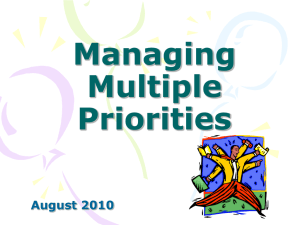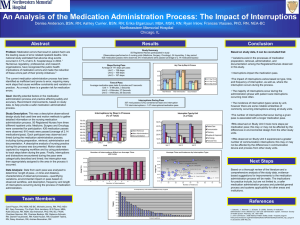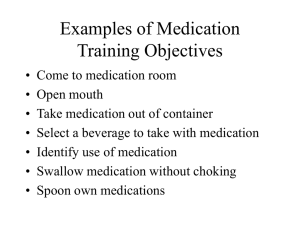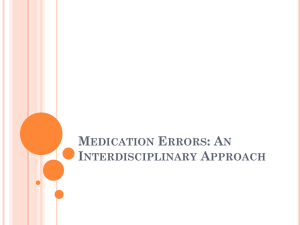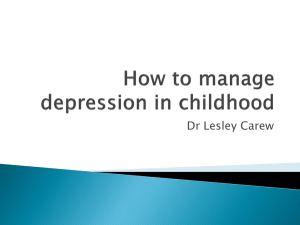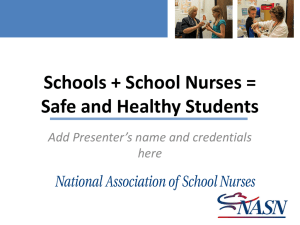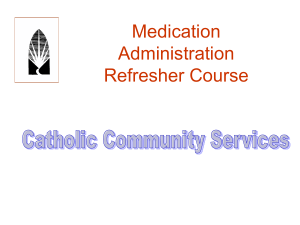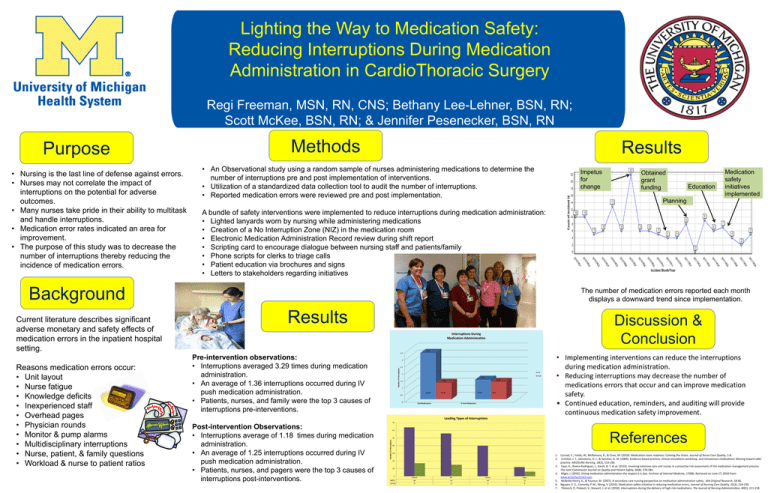
Lighting the Way to Medication Safety:
Reducing Interruptions During Medication
Administration in CardioThoracic Surgery
Purpose
• Nursing is the last line of defense against errors.
• Nurses may not correlate the impact of
interruptions on the potential for adverse
outcomes.
• Many nurses take pride in their ability to multitask
and handle interruptions.
• Medication error rates indicated an area for
improvement.
• The purpose of this study was to decrease the
number of interruptions thereby reducing the
incidence of medication errors.
Regi Freeman, MSN, RN, CNS; Bethany Lee-Lehner, BSN, RN;
Scott McKee, BSN, RN; & Jennifer Pesenecker, BSN, RN
4C Cardiothoracic Surgery Unit, University of Michigan, Ann Arbor, MI
Methods
• An Observational study using a random sample of nurses administering medications to determine the
number of interruptions pre and post implementation of interventions.
• Utilization of a standardized data collection tool to audit the number of interruptions.
• Reported medication errors were reviewed pre and post implementation.
Impetus
for
change
Education
Medication
safety
initiatives
implemented
A bundle of safety interventions were implemented to reduce interruptions during medication administration:
• Lighted lanyards worn by nursing while administering medications
• Creation of a No Interruption Zone (NIZ) in the medication room
• Electronic Medication Administration Record review during shift report
• Scripting card to encourage dialogue between nursing staff and patients/family
• Phone scripts for clerks to triage calls
• Patient education via brochures and signs
• Letters to stakeholders regarding initiatives
The number of medication errors reported each month
displays a downward trend since implementation.
Results
Discussion &
Conclusion
Interruptions During
Medication Administration
3.29
3.5
Pre-intervention observations:
• Interruptions averaged 3.29 times during medication
administration.
• An average of 1.36 interruptions occurred during IV
push medication administration.
• Patients, nurses, and family were the top 3 causes of
interruptions pre-interventions.
Number of Interruptions
3
2.5
Pre
2
Post
1.36
1.25
1.18
1.5
1
N=59
N=14
N=47
N=4
0.5
0
Oral Medications
IV Push Medication
• Implementing interventions can reduce the interruptions
during medication administration.
• Reducing interruptions may decrease the number of
medications errors that occur and can improve medication
safety.
• Continued education, reminders, and auditing will provide
continuous medication safety improvement.
Leading Types of Interruptions
70
Post-intervention Observations:
• Interruptions average of 1.18 times during medication
administration.
• An average of 1.25 interruptions occurred during IV
push medication administration.
• Patients, nurses, and pagers were the top 3 causes of
interruptions post-interventions.
60
References
50
Number of Interruptions
Reasons medication errors occur:
• Unit layout
• Nurse fatigue
• Knowledge deficits
• Inexperienced staff
• Overhead pages
• Physician rounds
• Monitor & pump alarms
• Multidisciplinary interruptions
• Nurse, patient, & family questions
• Workload & nurse to patient ratios
Obtained
grant
funding
Planning
Background
Current literature describes significant
adverse monetary and safety effects of
medication errors in the inpatient hospital
setting.
Results
40
30
20
10
0
Patient
RN
Family
Pager
Pre
64
56
40
12
Post
17
15
0
6
1. Conrad, C., Fields, W., McNamara, R., & Cone, M. (2010). Medication room madness: Calming the chaos. Journal of Nurse Care Quality, 1-8.
2. Crimlisk, J. T., Johnstone, D. J., & Sanchez, G. M. (2009). Evidence-based practice, clinical simulations workshop, and intravenous medications: Moving toward safer
practice. MEDSURG Nursing, 18(3), 153-160.
3. Faye, H., Rivera-Rodriguez, J., Karsh, B. T. et al. (2010). Involving intensive care unit nurses in a proactive risk assessment of the medication management process.
The Joint Commission Journal on Quality and Patient Safety, 36(8), 376-384.
4. Kliger, J. (2010). Giving medication administration the respect it is due. Archives of Internal Medicine, 170(8). Retrieved on June 17, 2010 from:
www.archinternmed.com.
5. McBride-Henry, K., & Foureur, M. (2007). A secondary care nursing perspective on medication administration safety. JAN Original Research, 58-66.
6. Nguyen, E. E., Connolly, P. M., Wong, V. (2010). Medication safety initiative in reducing medication errors. Journal of Nursing Care Quality, 25(3), 224-230.
7. Trbovich, P., Prakash, V., Stewart, J. et al. (2010). Interruptions during the delivery of high-risk medications. The Journal of Nursing Administration, 40(5), 211-218.

